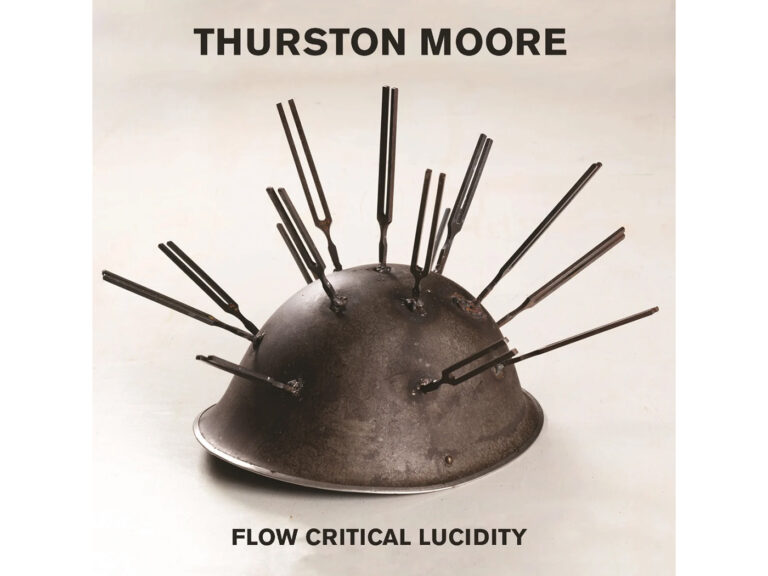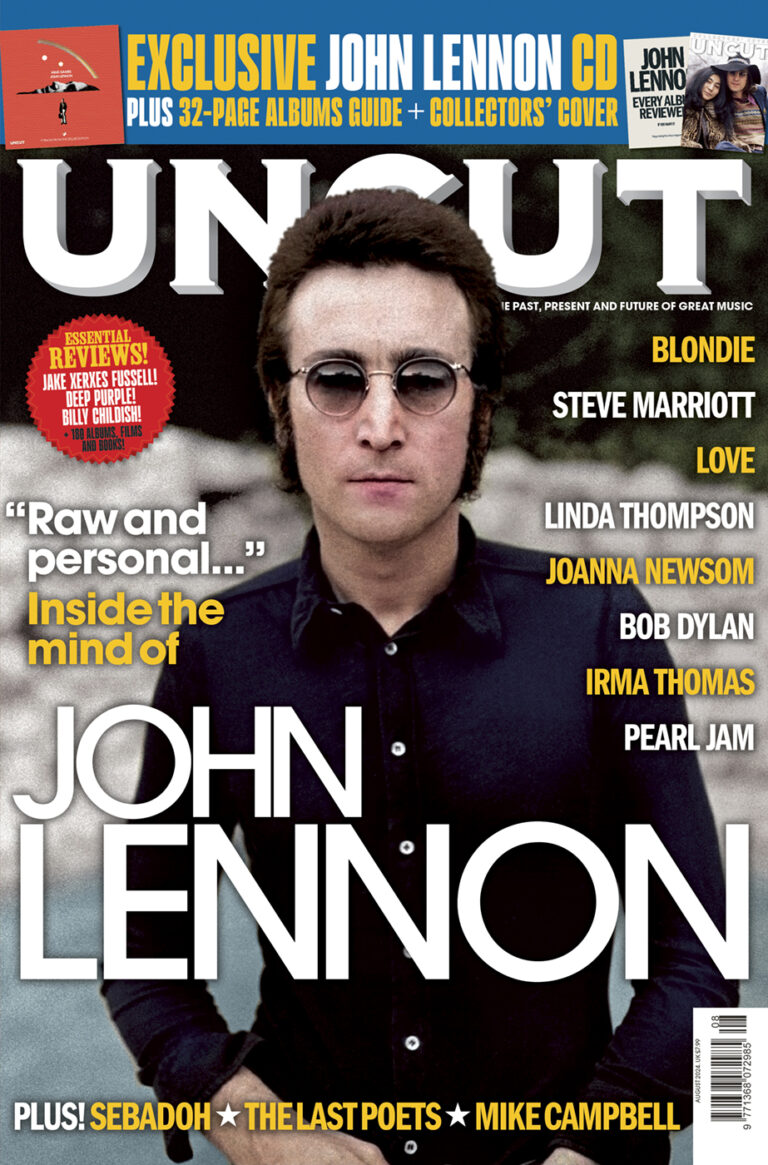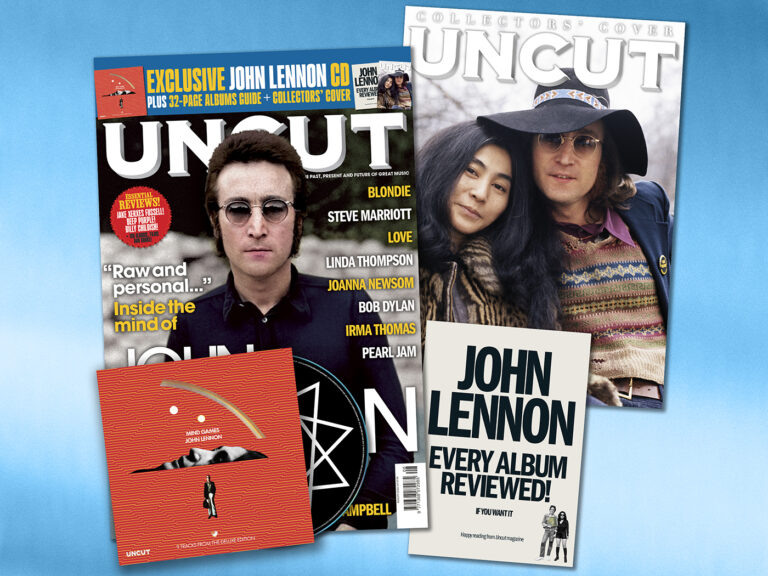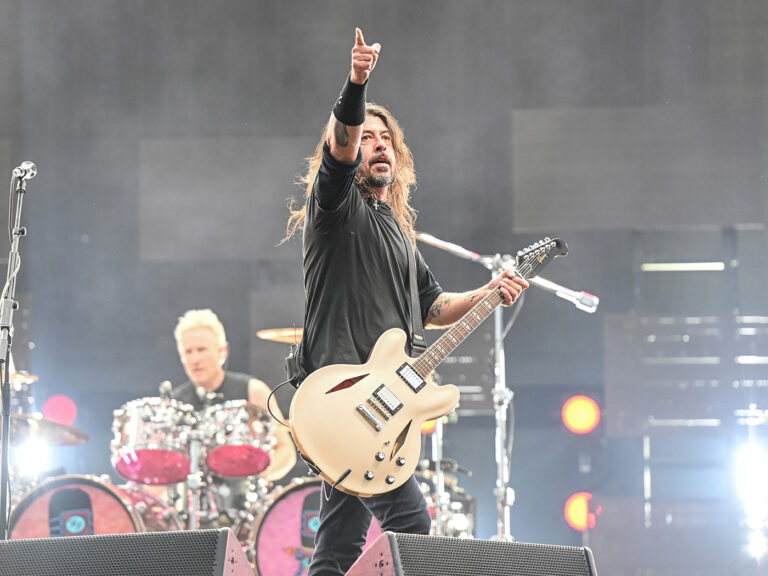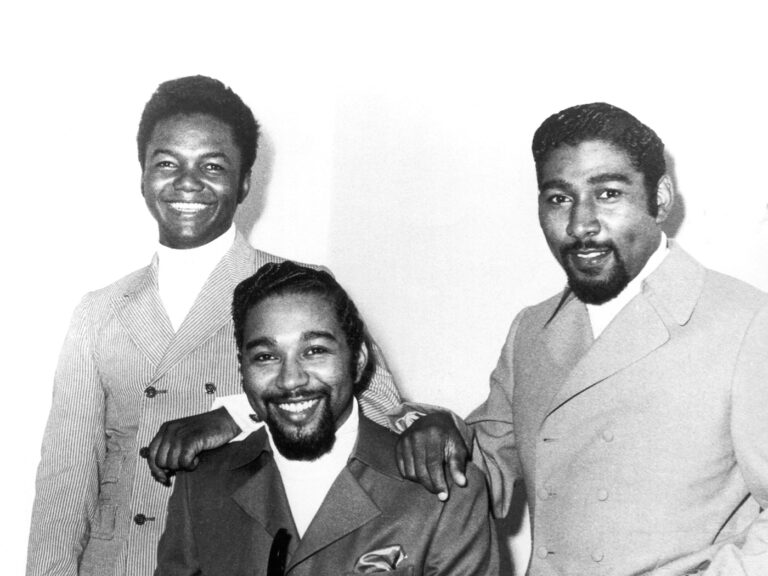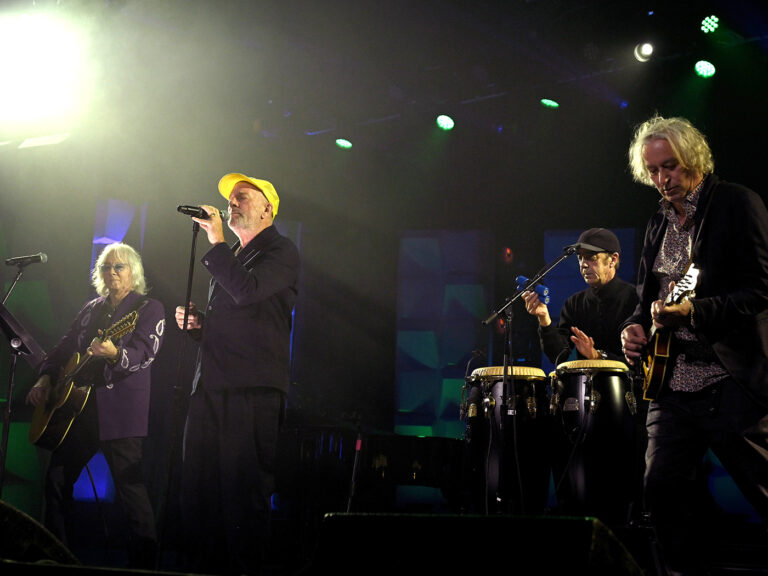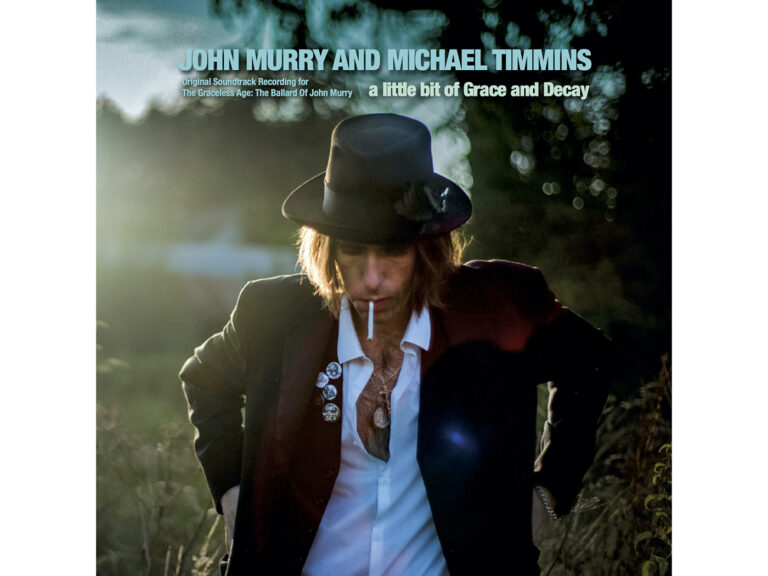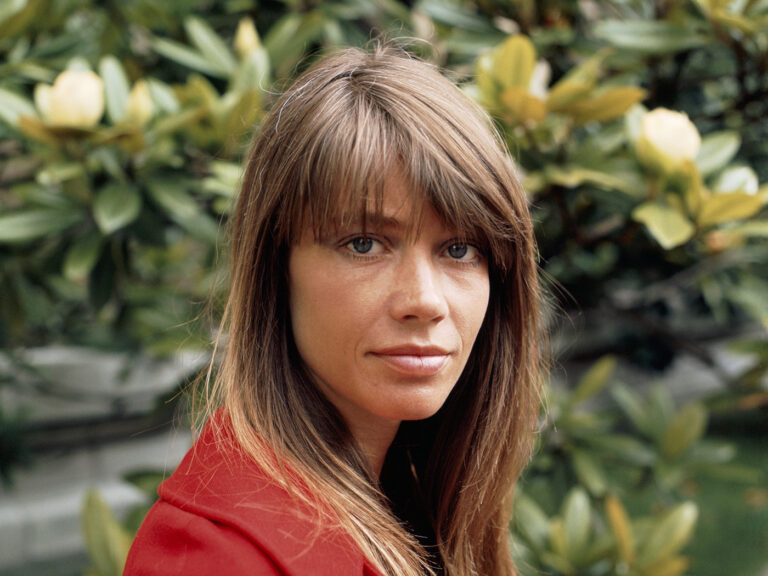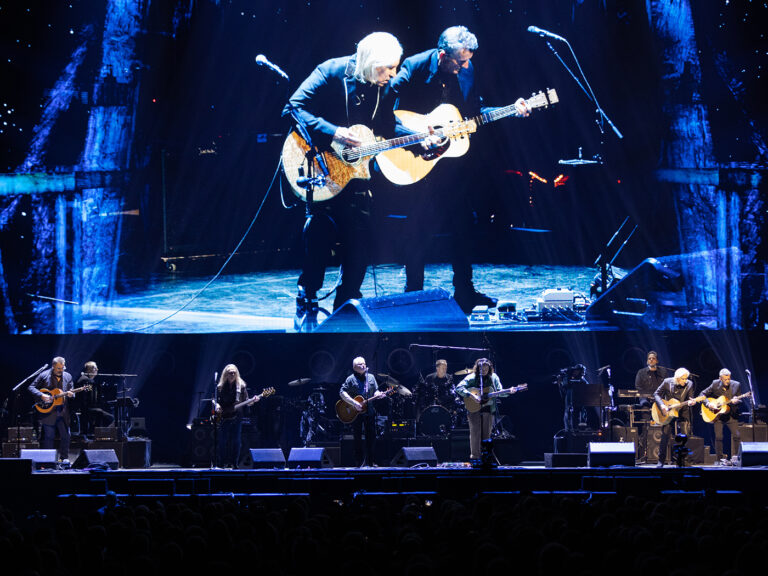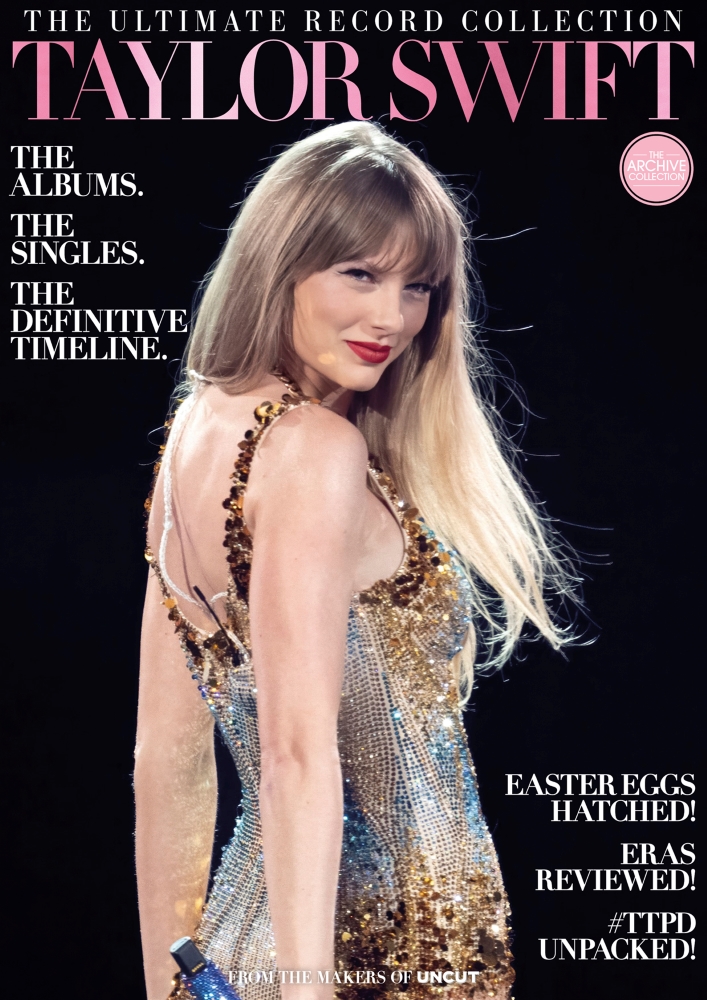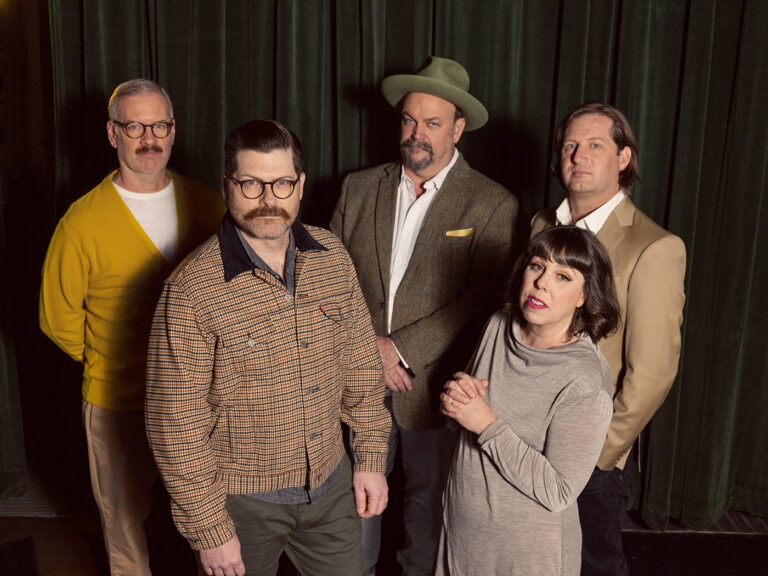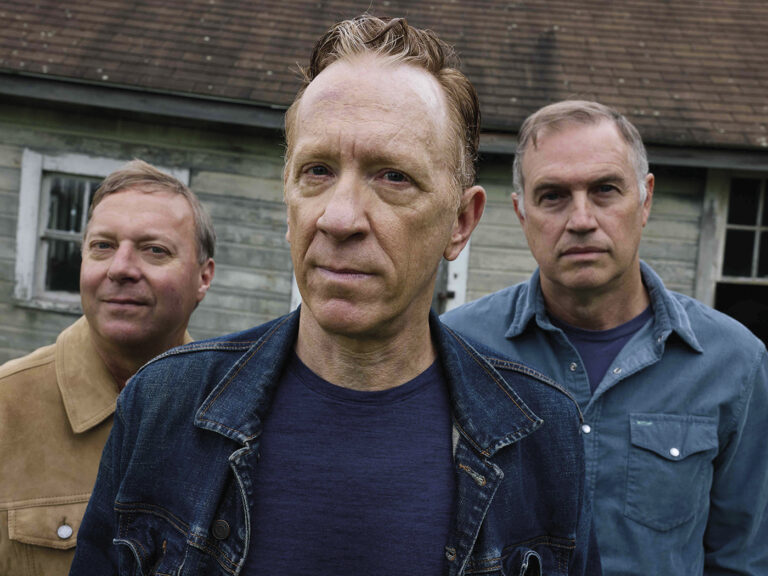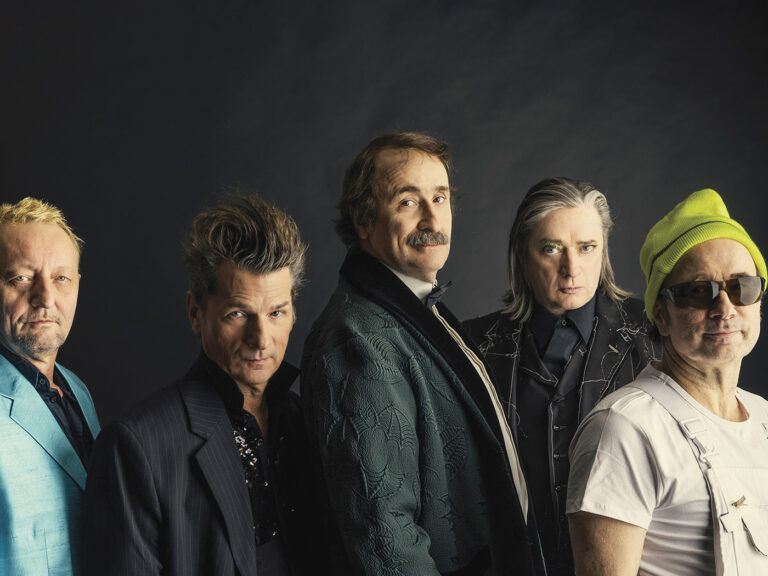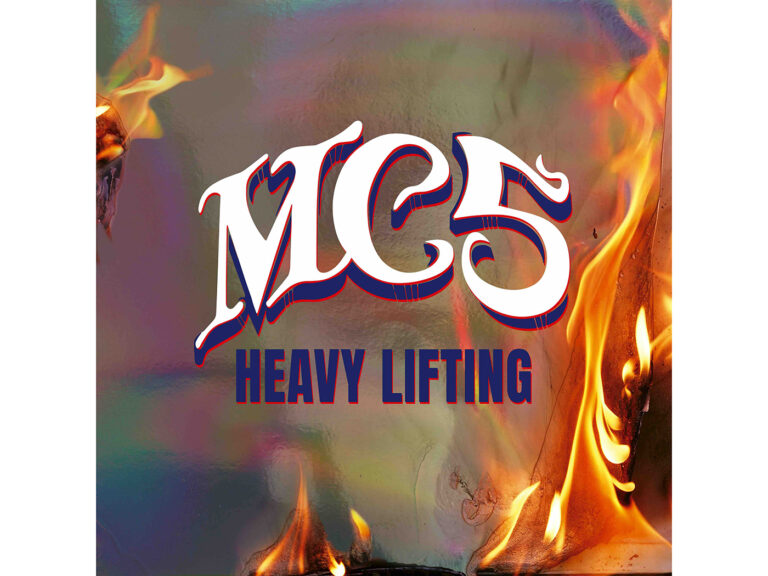To Paris, then, for a rare meeting with FRANÇOISE HARDY. There is a splendid new album to discuss, of course – her first for six years. But the pioneering chanteuse also reflects on her remarkable career, recounts run-ins with The Beatles, Dylan and Nick Drake, and shares her own hard-won philosophies. “In my head,” she tells Tom Pinnock, “I’m still very young.”
Originally published in Uncut’s June 2018 issue
Follow Tom on Twitter: @thomaspinnock
___________________________
Tucked away on the back cover of 1964’s Another Side Of Bob Dylan is a poem. “For Françoise Hardy,” writes Dylan. “At the Seine’s edge/A giant shadow/Of Notre Dame/Seeks t’ grab my foot…”
Hardy has known about Dylan’s untitled poem for the past 54 years, but it was only a few months ago that she really began to understand it.
“Earlier this year, two Americans got in touch with me,” she says. “They had inherited some drafts of the poem that Dylan had left in a café. They sent me these drafts, and I was very moved. This was a young man, a very romantic artist, who had a fixation on somebody only from a picture. You know how very young people are… I realised it had been very important for him.”
It is early spring when Uncut meets Hardy at the chic Hotel De Sers, not far from the Arc De Triomphe. She prefers not to venture out of central Paris if she can help it, so our rendezvous is near Hardy’s home, and just two miles from the ninth arrondissement where the singer grew up. Just turned 74, Hardy is still slim and bright-eyed, quick to laugh and as stylish as ever – today she’s wearing dark skinny jeans, a black top and a fitted blazer, with a bright-red scarf and gold necklace her only accessories.
Bob Dylan’s not the only artist to have been captivated by Hardy and her work, of course – The Beatles, The Rolling Stones, Nick Drake, David Bowie, Richard Thompson and Graham Coxon have all paid tribute to her considerable musical gifts.
“My sister had a Françoise Hardy single,” remembers Richard Thompson. “I think it was ‘Tous Les Garçons Et Les Filles’. My sister had other French records of the period – Richard Anthony, Hugues Aufray – so I was used to the intimacy of style. [But] this was sexier! If you put it together with the pictures of Françoise, it was a powerful package.”
Yet Hardy is not just a muse, but a compelling artist in her own right. She first came to prominence in 1962, aged just 18, with a mostly self-penned debut of infectious yé-yé – Europe’s pop take on rock’n’roll – and swiftly scored a massive hit with “Tous Les Garçons…”, which even cracked the UK Top 40.
“It was my first and most important hit,” Hardy says. “Unfortunately, as it’s not my best song!”
The tune was sprightly, but the lyrics were better suited to one of Émile Zola’s more miserable heroines than a young purveyor of Gallic pop: “I go alone through the streets,” Hardy sang. “The soul in pain… I go alone, because nobody loves me.”
“She was the opposite of all the French new artists trying to look and sound American,” explains renowned photographer Jean-Marie Périer, Hardy’s partner for much of the ’60s. “And her melodies were sad, she didn’t try to make them dance the twist.”
Hardy continued mining this seam of melancholy through a run of albums that quietly and tastefully explore styles from Brazilian jazz to English folk-rock. We’re in Paris to discuss these records, along with Hardy’s unexpected new album, Personne D’autre, in which she examines mortality and spirituality; in many ways, the record’s closest cousin may be Leonard Cohen’s final album, You Want It Darker.
“At my age the lyrics you are singing cannot be the same as the ones you were singing when you were 30 or 40 or even 50,” explains Hardy. “They have much to do with your past, but also with the idea of another life, in another universe.”
_________________________________
As a teenager in late-’50s Paris, Françoise Hardy found herself carried away by the pop music of the time, much of it British and American. “It was extraordinary, because every week you had tremendous new songs,” she says. “I was very fond of The Shadows and Cliff Richard, and also Marty Wilde. In the States, Elvis Presley, Paul Anka, Neil Sedaka, all these young people. I was only interested in that.”
As intoxicating as this new music was, these pop stars also acted as something of an escape for Hardy, whose childhood was “humble”, as Jean-Marie Périer puts it: her parents were unmarried – scandalous at the time – and her father was mostly absent, “married to I-don’t-know-who”, as Hardy explains.
“She lived in a very small family circle,” recalls Périer. “Her grandmother was always telling her that she was nothing, not even beautiful. When we started seeing each other, she had never even been in a theatre to see a movie.”
Hardy was intelligent, though, and by the time she passed her Baccalaureate at a younger age than usual, her interest in music was absolute. Her mother asked her father to buy her a gift, but Hardy had trouble deciding between a small radio and a guitar.
“I finally made up my mind for the guitar,” Hardy laughs. “Why did I want a guitar? I didn’t know anything about music! But I got the guitar, and I found out that with three chords I could make up quite a lot of tunes which were bad copies of the songs I was listening to all the time on Radio Luxembourg – ‘your station of the stars’!”
That Hardy then began writing her own songs is impressive – this was an era when pop stars generally employed professional writers (such as a young Serge Gainsbourg) and The Beatles were yet to release their first single. That much of her work still sounds strangely modern, eschewing the gaucheness of many of her yé-yé counterparts, is even more striking.
“At this time, the new artists in France used to sing American lyrics badly translated,” says Périer. “Let’s face it, the translators were not Marcel Proust. So she had no choice but to write her own – plus, she had things to say.”
Hardy believes her desire to write came from French singer Barbara. “She was a great artist, who was writing all her own songs. I was a great fan of hers; I went to see her live, and I always brought a rose to her.”
After signing with Vogue in late 1961, her debut – like almost all her albums, self-titled, but known by its most famous song, in this case “Tous Les Garçons…” – appeared in 1962. Within three months, Hardy was a major name in France, with her fame spreading throughout Europe. Despite the hits, though, Hardy was unhappy.
“I heard The Shadows behind songs like ‘Tous Les Garçons…’, but I had such bad musicians, such a bad producer… I thought those recordings were terrible. But I was on tour with Richard Anthony, and he said to me, ‘You have to record in England!’ My first recordings had such a huge success that my recording company didn’t want to change it, but finally we went to London, and for the first time I had a musical production I was happy with.”
From 1964’s Mon Amie La Rose onwards, Hardy was a regular at Marble Arch’s Pye Studios, working with arrangers Charles Blackwell, Arthur Greenslade and John Paul Jones and musicians including Jimmy Page. Hardy is effusive in her praise for most of those she’s worked with, but Jones’ arrangements come in for some stick. “Terrible production, terrible! He wanted to do a French production, and I was expecting exactly the contrary.”
As the decade swung into the mid-’60s, Hardy’s music began to sound lusher and richer, from the 12-string jangle of “Ce Petit Coeur” and the glacial, orchestral glide of “Il Se Fait Tard” (both written by Hardy) to the maverick fuzz-tone blues of “Je N’Attends Plus Personne”, featuring Page.
“From when she was 18, she knew she was different,” says producer Erick Benzi, who has worked regularly with Hardy over the past 20 years. “She was capable of going in front of big artists like Charles Aznavour and saying, ‘Your song is crap, I don’t want to sing it.’ She never made compromises.”
Accessible, but never pandering to trends, her first five albums were enough for Hardy to be seen as a serious artist, but it was her refusal to play the showbusiness game that made her something of an icon. She modelled, sure, but only for the most modern designers such as Paco Rabanne or André Courrèges, and it’s a fair bet that she would have been welcome at almost any high-society party; but Hardy preferred to mix in quieter circles, or stay at home and read.
“My job as photographer used to bring me into contact with acts like The Beatles and the Stones very often,” says Jean-Marie Périer. “All the Anglo-Saxons used to ask me to introduce them to Brigitte Bardot and to Françoise! When I toured with Bob Dylan he was asking me questions about her all the time.”
While she was performing a residency at London’s Savoy in the mid-’60s, Périer organised a dinner with Paul McCartney and George Harrison. “I remember this day because Jean-Marie had no tie,” says Françoise, “and so we couldn’t get into the club, one The Beatles used to go to often. It was a huge stress! Finally, somebody found a tie and gave it to him.”
Another sartorial debacle stymied a meeting with Burt Bacharach during Hardy’s Savoy run in 1965 – it seems the UK wasn’t quite ready for the futurist fashion Hardy preferred.
“In the audience was Burt Bacharach,” Hardy recalls. “I was a huge fan of his beautiful songs, and he wanted to meet me. I was in my stage dress, which was magnificent – it had been made by André Courrèges, and it was trousers and a top, all white, so elegant and modern, even today. I went down to the audience to see Burt, but the people from the Savoy didn’t let me in – I had been singing for three-quarters of an hour, but I couldn’t have a drink with Burt Bacharach because I was in trousers! Things have changed!”
_________________________________
On May 24, 1966, Hardy met Bob Dylan for the first time when he played the Paris Olympia. Hardy was now a huge admirer of Dylan’s songs, but the American’s opening acoustic set was a disaster, with Dylan visibly unwell and struggling to tune his guitar. During the interval, Hardy was told that the singer would only return for the second half if she came to see him in the interval.
“So I went to meet him,” says Hardy. “[After the concert] we were with some other French artists, like Johnny Hallyday, in Bob Dylan’s suite at the Georges V Hotel. Usually I never do this, it’s very embarrassing! Bob Dylan was already in his room, he wanted me to come in, and he played me two songs from his last album, which wasn’t yet released in France [Blonde On Blonde’s ‘Just Like A Woman’ and ‘I Want You’]. And that was it! I never saw him again.”
Alongside the hippest artists of the day, Hardy attended the Isle Of Wight festival in 1969. “I wanted to go and congratulate Bob Dylan after his set, but it was so crowded, it was impossible. I’m very surprised myself that I made the trip to an island for it, in the worst conditions! Was I camping? No, I don’t think so!”
If her presence in the festival’s VIP enclosure was the pinnacle of her acceptance by the international rock scene, Hardy soon moved out of its circles altogether. By this point, she was in a relationship with the more rebellious Jacques Dutronc, singer and songwriter and, as the ’70s dawned, Hardy pursued a rarer, stranger sound.
In autumn 1970, Françoise Hardy flew to Rio De Janeiro to sit on the jury for the city’s Fifth Popular Song Festival. Her fellow judges included Lalo Schifrin, Marcos Valle, Ray Conniff and Paul Simon, with the latter acting as chair. “Every personality had a hostess,” she explains.
“I had, I don’t know why, a very bad reputation, so the festival sent me their best hostess. But we very quickly became the best friends in the world.”
Hardy’s hostess, Lena, soon introduced the singer to a Brazilian singer-songwriter, Tuca, then performing in a Parisian restaurant, La Feijoada. Hardy fell in love with her music, especially the song “Même Sous La Pluie”, and the two began writing a new album together. The result, La Question, driven by Brazilian-influenced nylon-string guitar, double bass and strings, introduced a new sound for Hardy: heady, sensual and atmospheric, with her voice floating above the meandering baroque backings.
“This album is one of my best souvenirs,” says Hardy. “We started with Tuca on the guitar and a very good jazz bass player – I recorded the voice at the same time as them, then we went to Corsica on holiday with Tuca to decide if we would have strings or not on this record. When we were back in Paris, she played all the songs and for each song she proposed ideas to me for the strings. It has been the only time I have worked like that.”
While she was working with Tuca, Hardy was also on the lookout for other musicians to collaborate with. One songwriter that interested her was Nick Drake. “He had read how enthusiastic I was about one of his albums,” Hardy explains, “and so he came to the studio where I was recording in London, and he sat in the corner, almost hidden, and he never said one word. I was so full of admiration for his work, so I didn’t dare to say anything, and he didn’t dare to say anything [laughs].”
“Joe Boyd came up with this brilliant idea that Nick was going to write an album of songs for Françoise,” says producer and arranger Tony Cox. “I was going to produce it. So we travelled over to Paris – it was all pretty weird because Nick was a painfully shy bloke. Françoise is incredibly neurotic. She won’t do things like shaking hands, because she’s scared of catching germs from people.”
The Drake collaboration never happened, but Cox was keen to work with Hardy regardless. So, in late 1971, the singer travelled once again to London, this time to Chelsea’s Sound Techniques, to record a full album with Cox and a crack team of British folk-rockers, including Richard Thompson and Pat Donaldson.
“I remember they were all very keen to play on the Françoise sessions,” remembers Cox. “Particularly Richard Thompson, which was kind of surprising because he wasn’t someone who really volunteered to play on sessions much.”
“We did the tracks as a trio,” recalls Thompson, “and strings were overdubbed later. Françoise sang guide vocals on all tracks. We all got to hang out during breaks, in the Black Lion pub across the street. She was friendly and charming.”
Chosen songs included Trees’ “The Garden Of Jane Delawney”, Neil Young’s “Till The Morning Comes” and two Beverley Martyn songs. The results were akin to an English version of the Brazilian-influenced La Question: intimate, moonlit, eerie and quietly experimental, as shown by the backwards guitar running through her take on Buffy Sainte-Marie’s “Take My Hand For A While”.
“‘If You Listen’ was a pretty enough song, but there wasn’t anything to really get your teeth into. So I gave all the string instruments a choice to play any notes in any order, but playing col legno, with the wooden back of their bow, and it sounded great. I remember everyone, including Françoise, getting very excited when that sound emerged.”
Shy, reserved, yet strong-willed – it’s this peculiar combination of qualities that seem to have sustained Hardy throughout her career. There are certainly analogues with Nick Drake, in their personalities, voices and even a similar taste in chords and harmony. Yet, while Drake didn’t have the chance to even try his hand at real fame, Hardy has survived decades of it. “The last time I saw Nick Drake,” she says, “he called me at the end of one afternoon. I had always been feeling there was something wrong with him, but I didn’t know exactly what. I was going that evening to the restaurant of the Tour Eiffel to have dinner, because Véronique Sanson was performing there. But I felt I couldn’t leave him alone, so I said, ‘Come, and I’ll take you to the Tour Eiffel.’
“I don’t recall how the night ended, probably in a very normal way. But I was not surprised when I heard… He had everything going for him; he was very good-looking, mysterious and talented. There are always many reasons [for depression], but maybe one of them is the fact he had no success at all. C’était la goutte d’eau qui a fait déborder le vase [it was the straw that broke the camel’s back]…”
_________________________________
Hardy has remained something of a trésor national even as she’s experimented with multiple genres – jazz on 1980’s Gin Tonic, alternative rock on 1996’s Le Danger and orchestral arrangements on 2012’s fragile L’amour Fou – and collaborated with the likes of Air, Iggy Pop and Blur.
“She doesn’t take the past as a burden,” says Erick Benzi. “She’s very precise. She knows what she doesn’t like, so after a few times working with her I knew exactly what she expects from me and the music. First it’s about the capabilities of her voice – she has a very small range – and then it’s about the sensibility. There is a certain style that she likes.”
“Françoise was good in that she liked things to be slightly more adventurous than the norm,” says Tony Cox. “There was a bit of the Left Bank about her – she’s not your average pop singer, that’s for sure.”
Personne D’autre, Hardy’s new album – her 28th – came from trying times, with the singer suffering from health problems over the last few years. “I almost died,” she says, bluntly.
“There are always heartbreaking songs on her albums,” says Benzi, “but on this one in particular, because of her recent history. She was nearly dead, she came back to life, so on two or three songs it’s about this – like ‘Train Special’.”
“I thought, at my age, to take a ‘special train’ can only be a train which brings me to the infinite, to the cosmos,” explains Hardy. “I’m afraid of dying, because most of the time you’re suffering very much physically, but it’s not sad – for me, death is only the death of the body. I’m sure that the link between the soul, and the loved ones who are still alive, stays.”
“She likes it when the chords are a little weird,” adds Erick Benzi, “she likes things not to be too simple. So there are restrictions – but at the same time she is capable of doing a duet with Julio Iglesias!”
Personne D’autre was unplanned by its creator until she stumbled upon “Sleep”, a song by Finland’s Poets Of The Fall on YouTube, and was inspired to work on her own French adaptation. The speed of the new album’s production – Hardy only began writing last April – bodes well for more new music in the future.
“It’s the first time in my life I am so quick writing lyrics, recording the songs and releasing them,” she explains. “I didn’t think I’d do anything else, but a lot of tunes and melodies came to me and I couldn’t resist. I don’t understand English enough to understand Leonard Cohen’s words,” admits Hardy, when Uncut compares the subject matter of some of Personne D’autre with Cohen’s final work. “But I know he believed in spirituality, and I also have read a lot my whole life. There are many forms of spirituality, but when it is clever, there are many common points. I think Buddhism is very near to the truth… But the truth? We will discover it after we die.”
The interview almost over, Hardy takes Uncut’s pen to excitedly write down for us the name of Oren Lavie, an Israeli singer-songwriter who she admires, and who reminds her of Nick Drake. “My body is very old, but in my head I’m still very young,” she says, as she spells out his name in capitals. “I have a fan’s heart, still.”
_________________________
INITIALS FH
Françoise remembers Serge Gainsbourg
“He was a close friend, but I didn’t work very much with him, no. After he died, [Gainsbourg’s partner] Bambou told me, ‘Serge said sometimes that he didn’t understand why you never asked him to make a whole album with you.’ I was very flattered – but I had never asked him because I preferred to make my own album, even if it was not as good as an album written and produced by him – because when you were recording with Serge, it was his album, not yours. He was a very strong personality; he was absolutely charming, almost like a child sometimes when he had not drunk anything, but when he had drunk alcohol – he was very fond of cocktails, sweet liquor – he could be very different [laughs]. Yes, when he was a little drunk, he became ‘Gainsbarre’.”
_________________________
MY MY, YÉ-YÉ
The finest of Hardy’s long-players
TOUS LES GARÇONS ET LES FILLES
VOGUE, 1962
As primitive as it sounds, Hardy’s debut is packed full of rock’n’roll and yé-yé songs as infectious as her favourite tracks on Radio Luxembourg, chief among them the sashaying “Ton Meilleur Ami”. 7/10
L’AMITIÉ
VOGUE, 1965
Accompanied by the Charles Blackwell Orchestra, Hardy was perhaps at the peak of her pop powers on this lush, varied LP. The title track is sublime, and Hardy’s own “Tu Peux Bien” reaches Morricone levels of melancholy. 8/10
MA JEUNESSE FOUT LE CAMP…
VOGUE, 1967
Hardy begins to embrace subtler, folkier textures on her sixth album proper, with the title track (‘My Youth Is Flying Away’) and the grand torch song “Voilà” especially devastating. 8/10
LA QUESTION
SONOPRESSE, 1971
The masterpiece, an otherworldly mix of French chanson and bossa nova, wonderfully stripped down to fully show off Hardy’s voice and peerless delivery. 9/10
IF YOU LISTEN
KUNDALINI, 1972
Lazily titled 4th English Album in some territories, this is Hardy’s take on British folk-rock. Her version of Trees’ “The Garden Of Jane Delawney” is particularly striking. 7/10
LE DANGER
VIRGIN, 1996
Teaming up with writer Alain Lubrano, Françoise discovers the power of the electric guitar and retains her true character at the same time. 7/10
L’AMOUR FOU
VIRGIN/EMI, 2012
The Macedonian Radio Symphonic Orchestra join Hardy for this low-key, piano-heavy set of melodramatic, super-Gallic ballads, including “Si Vous N’Avez Rien À Me Dire…”. 7/10
PERSONNE D’AUTRE
PARLOPHONE/WARNER FRANCE, 2018
Death, regret, the usual, this time featuring gorgeously gauzy and reverb-heavy textures; closer “Un Mal Qui Fait Du Bien” does recall La Question, though. 7/10


